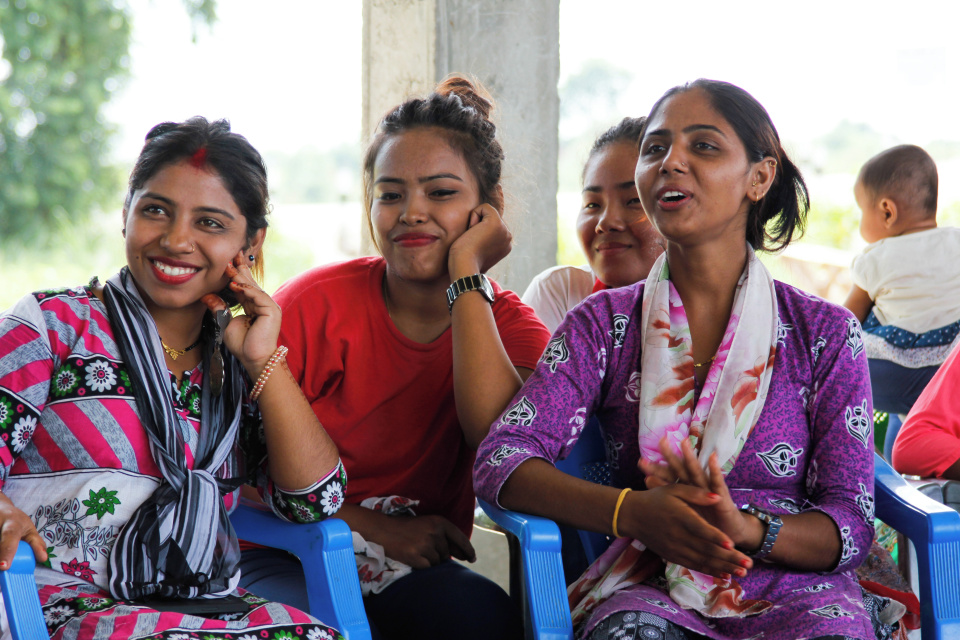National Action Plans (NAPs) and policies on GBV can promote a shared agenda for GBV prevention at the national level. To be effective, GBV policies and strategies need to be costed and resourced, take a multisectoral approach, and centre diverse voices in development, implementation and accountability. To frame discussions, a new handbook on multisectoral NAPs was presented by the Equality Institute and UN Women.
In South Africa, the prioritisation of GBV within the government, including high-profile advocacy from the President, has contributed to the implementation of policies to respond to high rates of violence. South Africa continues to work towards a whole of government approach to GBV prevention and has established a multisectoral National Council on GBV to strengthen accountability and coordination.
Developing a NAP can also support a country to arrive at a common understanding of GBV and its causes, supporting a collective process of identifying the steps needed to respond and prevent it – although in practice most prevention components of NAPs remain limited to awareness campaigns.
NAP development should include engagement with survivors, communities, WROs and wider civil society, and different levels of the political system to build consensus on GBV prevention through a participatory process. For example, the development of Chile’s Feminist Foreign Policy centred a participatory process and women’s autonomy at both community and national levels to promote buy-in. This demonstrated the power of women’s movements and community engagement combined with political will to achieve effective action at the highest levels.
Effective action also requires buy-in and commitment at the local level, for example through local action plans (such as at district or city level). A good example is the international network of mayors that have united to tackle gender inequality, with GBV as one of their three priorities. The local level provides opportunity for collaboration between local authorities and civil society/women’s groups, building on long-standing relationships, with employment, clinics and schools often providing an entry point.
There can be a short window to communicate success or results of a policy. The 100 Days Challenge[2] in South Africa is an example of mobilising and accelerating local-level action within a short timespan to then be able to develop meaningful collaborations with Government to solidify momentum and maintain political interest.
Multilateral development banks such as the World Bank and Asian Development Bank are already working “at scale” in many ways and can influence the institutional and policy levels on GBV, including influencing ministries of finance. MDBs have been particularly working through the transport and infrastructure sectors to promote safeguarding and tackle sexual exploitation, abuse and harassment, which in turn is helping to challenge the acceptance of wider forms of gender-based violence and shifting the gender norms of these institutions.
Harnessing technology and preventing harms
The digital space holds both opportunity and risks for the prevention of GBV at scale. Limited accountability within the digital space and technology-facilitated gender-based violence (TFGBV) are normalising violence in our everyday lives. Yet, when effectively resourced and regulated, the digital space can help to grow feminist activism, give space to diverse voices, facilitate global connectivity, and bring new actors into the field of GBV, such as young people, private corporations, and digital rights activists.
Effectively harnessing technology to prevent GBV at scale will require growing feminist movement engagement with digital infrastructure and connecting GBV experts with feminist tech and tech more broadly, building on approaches such as Take Back the Tech! [3] and C’est La Vie Telenovela[4].
Gaps in access to technology and digital literacy also need to be addressed, alongside efforts to build the capacity of feminist actors to engage, shape and design tech. Improving accountability and regulation of the digital space is critical, including through engagement with mainstream media.
Guiding principles exist on how to make the online space more inclusive, such as the Feminist Principles of the Internet which look at improving collaboration, promoting ethics of care and supporting accessibility, and the Global Partnership for Action on Gender-Based Online Abuse and Harassment. However, there needs to be increased uptake and mainstreaming of these approaches across the digital space.
[2] The 100 Day Challenges are designed to engage local communities to commit ambitious goals to prevent gender-based violence in South Africa and are a mechanism of implementing South Africa’s National Strategic Plan on Gender-Based Violence and Femicide at the local level.
[3] Take Back the Tech! is a global, collaborative campaign project that highlights the problem of tech-related violence against women, together with research and solutions from different parts of the world.
[4] C’est la Vie! is an educational TV series in Senegal focussed on raising awareness of gender-based violence, sexual, reproductive health and broader issues pertaining to the rights of women and girls. It is developed by Réseau Africain pour l’Education à la Santé (RAES).
